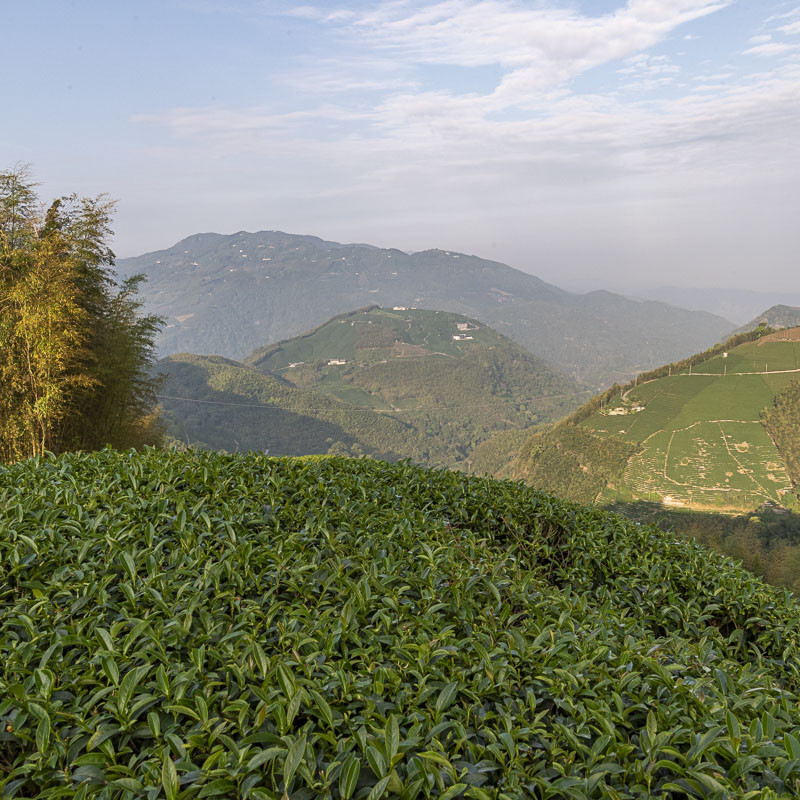Cultivar: Qingxin Oolong
Harvested: by hand on May 3rd, 2024. Day 1 of this plantation's harvest.
Origin: Yang Keng section, Shan Lin Xi (1300 m)
Process: Lightly oxidized, rolled Oolong, dried with a light roast
1. The view
The dry leaves are rather small with various green colors. The brew has a very good golden color and transparency. The open leaves are uneven in size and shape, but generally very tender. This farmer tends to harvest rather early than late.
2. The scents
The dry leaves explode with fragrances ranging from bamboo forest, pine, flowers and fruits. The brew is exuberant with all kind of fresh, high mountain fragrances. I also get notes of peaches that remind me of Oolong from Lishan!
3. The taste
The taste is pure and powerful. It coats the palate, triggers salivation and prolongs the aftertaste with a pleasant sweet and lightly astringent taste.
Conclusion: Theses Oolong leaves come from day 1 of the harvest from this well managed plantation. The leaves in this plantation are noticeably more yellow than in the adjunct field. (See one of the pictures). This shows the importance of the choice of fertilizer and the use (or lack of) herbicides and pesticides. This farmer pays close attention to his field and works to minimize the chemicals he uses and only puts natural, high quality fertilizers (peanut shells). This spring, the farmer was able to make without herbicides, which is why some of the leaves may have signs of having been bitten.
This high mountain Oolong displays a slightly higher than usual oxidation level. It has fruitier aromas and a powerful, concentrated taste. It's very different from the tea harvested the next day.











